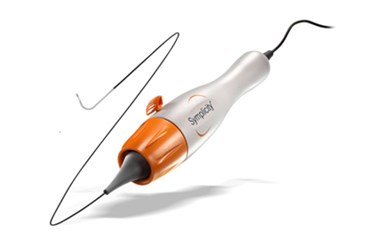Will A New Analysis Revive Renal Denervation?
By Chuck Seegert, Ph.D.

The SYMPLICITY HTN-3, a Medtronic renal denervation therapy designed to treat hypertension, recently failed a large clinical trial for its inability to meet its efficacy endpoint. Recently, however, a post hoc analysis of the study revealed several confounding variables that could have contributed to the failure. The analysis may have major implications for the future of renal denervation, which showed extremely promising results in early trials.
Renal denervation is a minimally invasive procedure that is designed to treat patients with chronic high blood pressure. Using catheters, high-energy ablation is performed on the interior of the arteries that feed the kidneys. Nerve endings from the sympathetic nervous system are found in this location and are integral in managing the blood pressure. With the ablation of the nerve endings, patients with chronic hypertension have had significant long-term reduction in blood pressure.
Earlier this year, Medtronic published the results of a large clinical trial of its renal denervation device, the SYMPLICITY HTN-3. The new technology, previously thought to be game changer for the treatment of hypertension, failed to prove it was effective at reducing blood pressure.
Because the results of the study were so different from preliminary testing, a secondary analysis of the data was conducted that may provide a new approach to testing, according to a story from MedPage Today. This Medtronic-sponsored re-examination of the data was published in the European Heart Journal and identified several variables that could have caused the surprise failure of the SYMPLICITY HTN-3.
A key finding of the analysis was that about 39 percent of patients treated with SYMPLICITY HTN-3 had been subject to medication changes during the study, according to the European Heart Journal. Study criteria were in place to prevent this, and each patient was supposed to be on a maximally tolerated dose before enrollment in the study. Nevertheless, there were changes in the dosage and the class of medications being administered to these patients.
Another confounding finding was related to the application of the ablation procedure, which was highly variable in the study, according to MedPage Today. Some patients received only a single ablation, while others received up to 26. Importantly, the analysis showed that a greater number of ablations was correlated with a reduction in blood pressure. Applying ablation to all four quadrants in both renal arteries was found to be critical as well.
“In our analysis, the lack of ablations in all four quadrants and the number of ablation attempts were highly correlated with blood pressure reductions,” the researchers wrote in the European Heart Journal. “These two variables may be correlated and more ablation attempts may well increase the probability of ablating within all four quadrants.”
While being clear that the analysis was only to generate hypotheses and direct future studies, the researchers pointed out that the importance of treatment uniformity would be necessary moving forward, according to MedPage Today.
Publication of negative outcomes in clinical trials is important for the medical device community in general. Transparency with clinical trial results may help other research teams avoid going down a path that has been unsuccessfully tried before.
Image Credit: Medtronic
